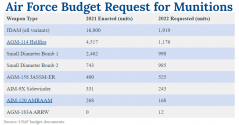The fact that America can outproduce China in anything should be a mark of shame. There are cases where China doesn't have the technology yet and more worked is needed to bring it to sufficient maturity, but that isn't the case here. There's no excuse for China not to procure PGMs and missiles at this rate.
Better to leave emotional words like "shame" out of it.
Production and procurement scale costs money -- as already discussed, buying things needs money to have the factories but also the support/storage/sustainment for the military. For the PLA and the Chinese MIC which has only fairly recently been able to modernize the other aspects of their military that are antecedent capabilities that are needed to enable certain types of munitions to be viable in the first place (like direct attack PGMs), assuming that China should be able to match or exceed US production is over simplistic.
If anything, it should be expected that the US is able to outproduce China in certain things given long term existing demand, existing industry and accumulation of human resources etc (commercial airliners, rockets in providing annual throw weight to orbit, guided munitions, among other things), and it is not "easy" nor should it be "expected" that China should naturally be able to match or exceed the US in producing everything. Even possessing the technology, actually having operationalized the technology is something else.
Opportunity cost is something that everyone faces, including China.
Even for the US, production scale and actual annual procurement is also dependent on demand, for example, see here between the differences in requested munitions of various types across two successive years:

